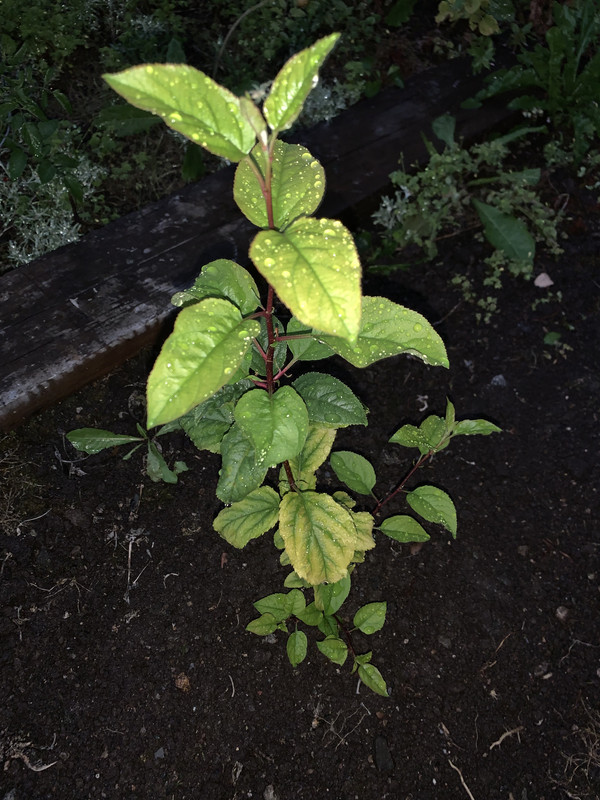
 4
4









Striving to grow things as naturally, simply, and cheaply as possible! 
My YouTube channel
 2
2




 1
1





Striving to grow things as naturally, simply, and cheaply as possible! 
My YouTube channel
 3
3




Zone 6, 45 inches precipitation, hard clay soil




 5
5





Striving to grow things as naturally, simply, and cheaply as possible! 
My YouTube channel
 8
8




“Uncertainty is an uncomfortable position. But certainty is an absurd one.”
― Voltaire
 1
1




May Lotito wrote:Also, when is the good time to transplant, late autumn or early spring?
Striving to grow things as naturally, simply, and cheaply as possible! 
My YouTube channel
 5
5




Michael Helmersson wrote:I stumbled on this PDF years ago and I'm using it as authorization to violate all the standard spacing guidelines:
https://justfruitsandexotics.com/wp-content/uploads/JF-Multiple-Fruit-Tree-Beds-1.pdf

Zone 6, 45 inches precipitation, hard clay soil




 6
6




May Lotito wrote:Maybe I don't need to move the apple tree.
“Uncertainty is an uncomfortable position. But certainty is an absurd one.”
― Voltaire
 3
3




olin erickson wrote:Things are taking shape, but 4 years here and I can’t seem to grow anything except flowers on my fruit trees.
“Uncertainty is an uncomfortable position. But certainty is an absurd one.”
― Voltaire
 3
3




 5
5




 3
3




Megan Styles wrote:I've planted some apples from seeds about 6 years ago. Both that survived bore fruit. Small, very crisp, and tart/sweet. One tree almost all fruit were eaten by possom. The other tree was left completely alone. Not sure if this is down to the different genetics of the 2 trees, but I was glad that we didn't loose both!
“Uncertainty is an uncomfortable position. But certainty is an absurd one.”
― Voltaire
 1
1




 9
9








Striving to grow things as naturally, simply, and cheaply as possible! 
My YouTube channel
 2
2




 1
1




 3
3




Zone 6, 45 inches precipitation, hard clay soil




 1
1




Striving to grow things as naturally, simply, and cheaply as possible! 
My YouTube channel
 4
4




Zone 6, 45 inches precipitation, hard clay soil




 3
3




 4
4




 4
4




 1
1




Barbara Kochan wrote:I intend to plant a bunch of apple seeds later this fall. ... Any thoughts/suggestions?
 1
1




 4
4




“Uncertainty is an uncomfortable position. But certainty is an absurd one.”
― Voltaire
 7
7




Zone 6, 45 inches precipitation, hard clay soil




 3
3





Striving to grow things as naturally, simply, and cheaply as possible! 
My YouTube channel
 2
2




 3
3




Bethany Brown wrote:I came here To ask about growing soles from seed. I know fruit trees are almost always grafted, but wouldn’t it be better if we could grow trees that naturally produced desirable fruits and grew on healthy rootstock? How can we achieve this?
 4
4




Bethany Brown wrote:I came here To ask about growing soles from seed. I know fruit trees are almost always grafted, but wouldn’t it be better if we could grow trees that naturally produced desirable fruits and grew on healthy rootstock? How can we achieve this?
“Uncertainty is an uncomfortable position. But certainty is an absurd one.”
― Voltaire
 4
4




Striving to grow things as naturally, simply, and cheaply as possible! 
My YouTube channel
 3
3




Steve Thorn wrote:
The result was an explosion of new varieties and flavors never seen before and probably since. It seems like in England a lot of varieties originated from hobby growers sharing varieties among themselves and in France it seems very similar but from owners of small nurseries.
“Uncertainty is an uncomfortable position. But certainty is an absurd one.”
― Voltaire
 3
3




 1
1




Oak Summit Nursery - Zn 3b Manitoba, Canada
www.oaksummitnursery.ca
@OakSummitNursery
 1
1




Doug McGregor wrote: I started 500-600 seeds this year
“Uncertainty is an uncomfortable position. But certainty is an absurd one.”
― Voltaire




Michael Helmersson wrote:
Great post. As I read it, I kept wondering, what on earth are you going to do with all these seedlings? I'm glad you added your website link at the bottom. I've done countless searches online, looking for nurseries in Canada but I keep stumbling on ones that I've never heard of through word of mouth. I'm glad to bookmark your site. Thanks.
Oak Summit Nursery - Zn 3b Manitoba, Canada
www.oaksummitnursery.ca
@OakSummitNursery

|
Be reasonable. You can't destroy everything. Where would you sit? How would you read a tiny ad?
Learn Permaculture through a little hard work
https://wheaton-labs.com/bootcamp
|









